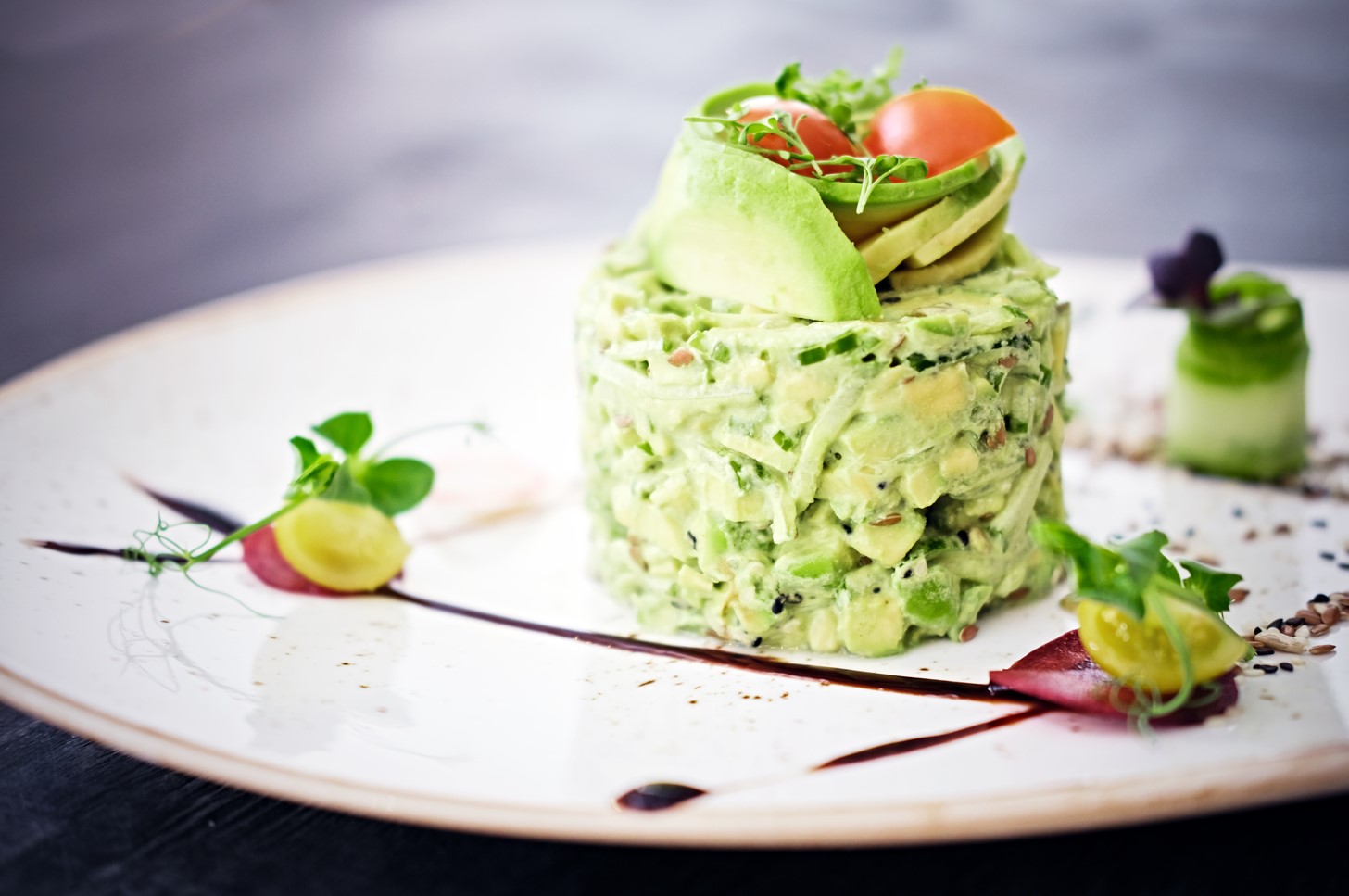
The art of plating is a culinary practice that focuses on presenting food in a visually appealing and aesthetically pleasing manner. Just as a painting or sculpture can evoke emotions and convey meaning through its visual elements, a well-plated dish can enhance the dining experience by stimulating the senses and creating anticipation for the flavors to come.
While taste remains the primary factor in judging the success of a dish, the presentation plays a crucial role in enhancing the overall dining experience. The art of plating is not about creating overly complicated or extravagant arrangements, but rather about balancing colors, textures, and shapes to complement the flavors and showcase the chef’s creativity.
Here are some essential elements that chefs consider while mastering the art of plating:
1. Balance: Achieving balance in a dish involves arranging the components in a way that no single element overwhelms the others. It includes considering visual balance in terms of colors and proportions.
2. Colors: A visually appealing plate often features a diverse range of colors, which can be achieved through various ingredients like vibrant vegetables, colorful sauces, or edible flowers. Different colors can evoke different emotions and set the tone for the dining experience.
3. Texture: Contrasting textures can make a dish more interesting and dynamic. For example, pairing a tender piece of meat with a crunchy garnish or a smooth puree can create a delightful sensory experience.
4. Height and Depth: Creating height or layering elements can add dimension to the presentation. Stacking or arranging items at different heights can make the plate more visually engaging.
5. Focal Point: Every plated dish should have a focal point, a visually dominant element that draws the diner’s attention. It could be the main protein or a visually striking garnish.
6. Negative Space: Leaving some areas of the plate empty (negative space) can help in focusing attention on the plated elements and prevent overcrowding.
7. Plate Selection: The choice of the plate or platter can significantly impact the presentation. Different shapes and colors can complement or contrast the food being served.
8. Utensils and Accents: Consider how utensils, such as forks, spoons, and tweezers, can be used to delicately arrange components. Edible accents like microgreens, herbs, or sauces can add a finishing touch to the presentation.
9. Seasonal and Local Ingredients: Using fresh, seasonal, and locally sourced ingredients not only ensures better flavors but also adds authenticity and a connection to the environment.
10. Storytelling: Some chefs use plating to tell a story or convey a concept. This approach can add depth and meaning to the dining experience.
The art of plating is continuously evolving, influenced by culinary trends, cultural expressions, and individual chef styles. It is a skill that requires practice, creativity, and a keen eye for detail. When done masterfully, it elevates a dish from mere sustenance to a gastronomic work of art.

Creating stylish plating for gourmet dishes is an art that involves creativity, attention to detail, and an eye for aesthetics. Here are 50 tips and ideas to help you elevate the presentation of your gourmet dishes:
1. Choose the right plate: Select plates that complement the style of the dish and highlight its colors and textures.
2. Balance the elements: Arrange the components of the dish in a balanced and visually appealing manner.
3. Utilize negative space: Leave some empty space on the plate to avoid overcrowding and draw attention to the main elements.
4. Pay attention to color: Create contrast and harmony by using vibrant and complementary colors.
5. Incorporate edible flowers: Use edible flowers to add a pop of color and elegance to your dish.
6. Play with different shapes: Use circular, triangular, or rectangular shapes to add variety to the presentation.
7. Think about height: Add height to the plate by stacking elements or using garnishes like microgreens.
8. Use unique serving vessels: Consider using unconventional serving vessels like mini saucepans, slates, or wooden planks.
9. Apply the rule of thirds: Place elements on the plate following the rule of thirds to create visual interest.
10. Garnish strategically: Garnish with fresh herbs, citrus zest, or sauces to enhance the overall look.
11. Create swirls and drizzles: Use sauces to create artistic swirls or drizzles on the plate.
12. Embrace minimalism: Sometimes, less is more. Let the natural beauty of the ingredients shine through.
13. Use geometric patterns: Arrange food in geometric shapes or lines for a modern and sophisticated look.
14. Play with texture: Incorporate various textures, such as crunchy, creamy, or velvety, to add complexity to the dish.
15. Plate with tweezers: Use tweezers to delicately place small components precisely on the plate.
16. Consider the rim: Be mindful of where you place food on the plate in relation to the rim, leaving some space for visual breathing room.
17. Experiment with color gradients: Create visually stunning gradients by arranging ingredients from light to dark or vice versa.
18. Plate sauces creatively: Use squeeze bottles or small spoons to place sauces with precision.
19. Highlight the star ingredient: Give prominence to the main ingredient of the dish by placing it strategically.
20. Use edible dust: Sprinkle edible dust, like beetroot or cocoa powder, to add a touch of elegance.
21. Embrace the rustic look: For certain dishes, a rustic presentation can be equally charming and stylish.
22. Plate seafood in shells: Serve seafood dishes inside the shells to create a captivating seaside feel.
23. Experiment with different plating angles: Change the angle of plating for unique perspectives.
24. Incorporate edible microgreens: Microgreens not only add flavor but also create a visually appealing backdrop.
25. Create a focal point: Draw attention to a specific element by positioning it in the center or using a contrasting color.
26. Add height with tuiles: Make tuiles or edible wafer-thin crisps to add height and texture.
27. Use different plate sizes: Mix and match plates of various sizes and shapes for a creative display.
28. Plate from left to right: Serve dishes with a natural flow from left to right, following the direction of reading.
29. Consider the cultural context: Incorporate elements that reflect the cuisine’s cultural heritage.
30. Plate deconstructed dishes: Arrange deconstructed components artistically for a contemporary look.
31. Utilize pipettes: Use pipettes to infuse sauces or dressings into the dish at the last moment.
32. Plate desserts with edible gold leaf: Add a touch of luxury with edible gold leaf on desserts.
33. Plate warm dishes on warm plates: Ensure the plates are warm before serving hot dishes for a professional touch.
34. Plate cold dishes on chilled plates: Chill plates before serving cold dishes to maintain the proper temperature.
35. Use food molds: Shape ingredients into uniform forms using food molds.
36. Plate with tweezers: Use tweezers to delicately place small components precisely on the plate.
37. Plate with tweezers: Use tweezers to delicately place small components precisely on the plate.
38. Plate seafood in shells: Serve seafood dishes inside the shells to create a captivating seaside feel.
39. Experiment with different plating angles: Change the angle of plating for unique perspectives.
40. Incorporate edible microgreens: Microgreens not only add flavor but also create a visually appealing backdrop.
41. Create a focal point: Draw attention to a specific element by positioning it in the center or using a contrasting color.
42. Add height with tuiles: Make tuiles or edible wafer-thin crisps to add height and texture.
43. Use different plate sizes: Mix and match plates of various sizes and shapes for a creative display.

44. Plate from left to right: Serve dishes with a natural flow from left to right, following the direction of reading.
45. Consider the cultural context: Incorporate elements that reflect the cuisine’s cultural heritage.
46. Plate deconstructed dishes: Arrange deconstructed components artistically for a contemporary look.
47. Utilize pipettes: Use pipettes to infuse sauces or dressings into the dish at the last moment.
48. Plate desserts with edible gold leaf: Add a touch of luxury with edible gold leaf on desserts.
49. Plate warm dishes on warm plates: Ensure the plates are warm before serving hot dishes for a professional touch.
50. Plate cold dishes on chilled plates: Chill plates before serving cold dishes to maintain the proper temperature.
Plating is an art, and there are endless possibilities to experiment with. Let your creativity flow and aim to create dishes that not only taste exceptional but also look stunning on the plate. Happy plating!
Related Posts
How to become an art collector1. Research: Start by researching the styles of art that appeal to you. Visit art galleries, museums, and exhibitions to develop an understanding of various artists and their works. 2. Build a network: Connect with people who are interested in art and attend events and meet-ups related to art. This will help you gain knowledge and make informed decisions about buying artworks. 3. Budgeting: Decide on a budget based on your goals and financial capacity. You can start with buying affordable and emerging artists' works and later move to contemporary or established artists. 4. Purchase: Start by buying art from reputable dealers, galleries, and auction houses. Be careful of scams and always verify the authenticity of the artworks. 5. Storage and maintenance: Invest in proper storage and handling of artworks to ensure their preservation. 6. Diversify your collection: As you collect, diversify by acquiring different genres, periods, and styles of…
Elevate Your Living Space: The Art of Decorating with ArtYour living space is a canvas waiting to be adorned with creativity and personality. One of the most captivating ways to enhance your home's ambiance and express your unique style is through the thoughtful use of art. Whether you're an art aficionado or a novice appreciator, this article will guide you through the art of decorating with art to transform your living space into a captivating and harmonious sanctuary. 1. Reflect on Your Aesthetic Taste Before diving into the world of art, take a moment to reflect on your aesthetic preferences. Consider your favorite colors, themes, and artistic styles. Are you drawn to modern and abstract pieces, or do you prefer classic and timeless art? Understanding your taste will help you choose artworks that resonate with your soul and complement the overall design of your living space. 2. Start with a Focal Point Select one or more prominent walls in…
Tips to choose the art pictures for your living roomChoosing art pictures for your living room is a wonderful way to personalize your space and add character and style to your home. Here are 20 detailed tips to help you make the best choices: Define your style: Determine the overall style you want for your living room. Consider whether you prefer modern, traditional, minimalist, abstract, or other art styles that resonate with you. Consider the room's theme: If your living room already has a theme or color scheme, look for art that complements or enhances it, creating a cohesive and harmonious look. Size matters: Measure the available wall space to decide the appropriate size for your art. Avoid pieces that are too small and get lost on a large wall or too big and overwhelm the room. Balance and proportion: Consider the balance of the room when selecting art. If you have a large sofa or furniture piece on…
20 tips to decorate your house or apartment with the art printsDecorating your house with art prints is an excellent way to add personality, color, and visual interest to your home. Whether you are an art connoisseur or simply appreciate beautiful design, there are endless possibilities to introduce art into your living spaces. To help you get started, we have put together a list of 20 tips for decorating your house with art prints. 1. Consider your walls - Think about the color and texture of your walls when selecting art prints. Opt for pieces that will complement the existing aesthetic of your space. 2. Create a focal point - Choose one standout piece of art to serve as the center of attention in a room. 3. Create a gallery wall - Select a variety of prints of different sizes and styles to create a unique and eclectic gallery wall. 4. Pair with plants - Use plants to enhance the natural…
Exploring Gastronomy: The Art and Science of FoodExploring gastronomy is a fascinating journey into the world of food, where art and science converge to create extraordinary culinary experiences. Gastronomy is not merely about cooking or eating; it delves deeper into the understanding of food, its origins, preparation techniques, and how it affects our senses and emotions. Let's explore the key aspects of this captivating subject: 1. Definition of Gastronomy: Gastronomy is the study of the relationship between food and culture, as well as the art and science of food and cooking. It involves understanding the history, ingredients, techniques, and traditions that contribute to the diverse cuisines found around the world. 2. Culinary Anthropology: Gastronomy encompasses the cultural and social aspects of food. It examines how food shapes and is shaped by human culture, traditions, and customs. The way people prepare and consume food is often influenced by their surroundings, beliefs, and historical practices. 3. Science of Taste:…
Barcelona Beyond Gaudi: Savoring Art, Food, and HistoryBarcelona is a vibrant and culturally rich city that offers much more than just the architectural wonders of Antoni Gaudí. If you're interested in delving deeper into the city's art, food, and history, there are plenty of amazing experiences to savor. Here's a guide to help you make the most of your trip: 1. Art and Museums: - Museu Picasso: Explore the works of one of the most influential artists of the 20th century, Pablo Picasso. The museum houses an extensive collection of his early works, showcasing his evolution as an artist. - Museu Nacional d'Art de Catalunya (MNAC): This museum is home to an impressive collection of Catalan art spanning various periods, including Romanesque, Gothic, Renaissance, and Modernism. - Fundació Joan Miró: Discover the unique and imaginative art of Joan Miró, a renowned Catalan surrealist painter and sculptor. The museum is located on Montjuïc hill and offers stunning views…
The Art of Napping: Embracing Siestas for Improved ProductivitySiestas, or short daytime naps, have been a part of various cultures for centuries, and research has shown that they can indeed have positive effects on productivity and overall well-being. Napping is not just for lazy afternoons; it can be a strategic tool to enhance your daily performance. Here's how you can embrace siestas for improved productivity: 1. Understanding the Benefits: Napping can improve alertness, cognitive function, and mood. It helps to combat fatigue and restores energy levels, leading to increased productivity and focus. 2. Timing is Key: The ideal nap duration for productivity is usually between 10 to 30 minutes. Short naps prevent you from falling into deeper sleep stages, which can lead to grogginess upon waking. Longer naps may lead to sleep inertia, making it harder to get back to work. 3. Find the Right Time: The best time to take a nap is usually in the early…
The Art of Letting Go: Overcoming Challenges and Moving ForwardLetting go is a powerful and transformative art that allows us to release the grip of past challenges, pain, and disappointments. It's a process of liberation, making space for new experiences, growth, and happiness. However, mastering the art of letting go is not always easy, as it requires courage, self-compassion, and a willingness to embrace change. In this guide, we will explore the steps to overcome challenges and move forward in life with grace and resilience. 1. Acceptance: The first step in letting go is to accept the reality of the situation. Acknowledge your emotions and feelings without judgment. It's natural to feel hurt, angry, or sad when facing challenges, but suppressing these emotions will only prolong the healing process. Embrace the pain, as it is an essential part of the journey towards healing and growth. 2. Identify the Source: To effectively let go, you must understand the root cause…
Embracing the Present: The Art and Science of MindfulnessIn a fast-paced and ever-changing world, the concept of mindfulness has emerged as a powerful antidote to stress, anxiety, and the constant noise of modern living. Mindfulness, rooted in ancient wisdom and backed by scientific research, offers a profound way to reconnect with ourselves, our surroundings, and the present moment. In this article, we explore the essence of mindfulness, its benefits, and how to incorporate it into our daily lives to cultivate a sense of inner peace and well-being. Understanding Mindfulness: At its core, mindfulness is the practice of paying attention to the present moment with an open and non-judgmental mindset. It involves being fully aware of our thoughts, feelings, bodily sensations, and the environment around us, without getting entangled in them. Mindfulness encourages us to observe our experiences with curiosity and acceptance, fostering a deeper understanding of ourselves and the world. The Science Behind Mindfulness: Extensive research has shown…
Quenching the Thirst: The Art of Hydrating Your Facial SkinOur facial skin is a reflection of our overall health and well-being, and one of the key elements to achieving a radiant and youthful complexion is proper hydration. Hydrating your facial skin goes beyond simply using moisturizers; it involves adopting a holistic approach that nourishes and replenishes the skin from within. In this article, we delve into the importance of facial skin hydration, effective hydration techniques, and tips to maintain a well-hydrated and glowing complexion. The Importance of Facial Skin Hydration: Our facial skin is constantly exposed to environmental stressors, harsh weather, and pollutants, which can lead to dryness, dullness, and premature aging. Proper hydration is essential for maintaining the skin's elasticity, suppleness, and protective barrier. It helps to retain moisture, promote skin cell turnover, and prevent water loss, leaving the skin soft, plump, and radiant. Effective Hydration Techniques: 1. Hydrating Cleansers: Begin your skincare routine with a gentle and…



